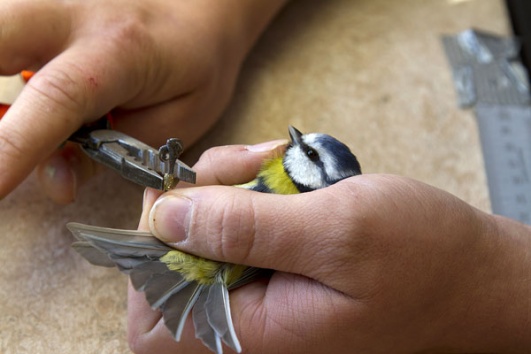Here you can read more about which cookies are being set.
Falsterbo Bird Observatory
Falsterbo Bird Observatory began operating in the 1960s. During the first decades ringing was the main focus of operations and was largely conducted in the lighthouse garden near Falsterbo peninsula’s south-western cape, Nabben. Nowadays tasks include counting breeding, resting and migrating birds.


With its isolated location the lighthouse garden exerts a great attraction to birds migrating at night who, at dawn, interrupt their flight to rest and look for food. The birds are caught in specially designed nets, ringed and released again. The original purpose of ringing birds was to create an understanding of different species’ migration routes via reported recoveries and wintering areas and also an understanding of the birds’ longevity and causes of death.
Since 1980 the birding station has conducted a standardized catchment of migrating birds in the lighthouse garden. About 25 000 birds are ringed annually and it is not only information regarding the mysteries of bird migration which is of use but these statistics are also used for environmental monitoring services. The birds react quickly to changes in the environment, whether concerning environmental contaminants or climate variations. Fluctuations in the annual catch figures give us indications of how the environment is changing for better or worse. Ringing has thus become an important tool for environmental monitoring.
Falsterbo Bird Observatory collaborates with researchers at the Department of Animal Ecology, Lund University. Currently radar studies of migration and orientation tests are being conducted.
Falsterbo Bird Observatory also participates in practical bird welfare. Measures to ensure the breeding of Avocets in the Flommen Nature Reserve is one example.
An increasingly important part of Falsterbo Bird Observatory’s activities is public relations. Annually thousands of people are guided. Important target groups are children and adolescents, but also organizations, associations and others are offered close encounters with birds and informed insight into bird migration, bird station activities, ecological interactions, and current environmental issues.

Photo: P-G Bentz/sturnus.se.





